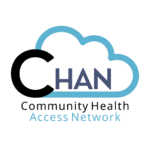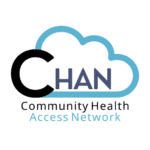Collaborative Benefits
Find Opportunities for Growth In Our Workgroups
Members of the CHAN collaborative are supported by highly knowledgeable staff. CHAN's goal is to help increase efficiency and provide the tools to help improve the care of patients.
Systems Support
Integrated Business Software
Member organizations utilize state-of-the-art electronic patient records, practice management, and accounting system software through CHAN’s central enterprise. The software has been linked internally (between systems) and with external data sources to automate the flow of information. This makes the information timely and preserves the integrity of the data for clinical decision making.
Data Repository
We maintain and support a large data warehouse integrating data from multiple data sources. Custom clinical and operational dashboards are created for our member organizations to help assist them in viewing their data quickly and accurately. The data warehouse also support/maintain SAP Business Objects Web Intelligence (WebI) universes, providing a secure web-based reporting and analysis tool for end-users to create their own ad hoc reports
Training
CHAN provides comprehensive hands-on training designed to meet the clinical and operational needs of members. Training emphasis is put on specific roles and job functions within an organization. CHAN also provides upgrade training when a new version of the application is implemented.
Reporting
Reporting and Analytical Function
The HCCN provides the lead on clinical and operations report development and production for the member sites, utilizing the central database and a centralized robust data warehouse and Business Intelligence reporting tools.
Collaborative Workgroups
A big advantage of belonging to the collaborative is the opportunity to learn from one another and improve systems. The members contribute to the decisions about the system's configuration and processes that are required to support those decisions.
The workgroups are comprised of subject matter experts from our member organizations working together to manage issues and improvements to the system.
Participants always consider how their decisions and resultant outcomes impact the universal use, functioning, and effectiveness of the system.

